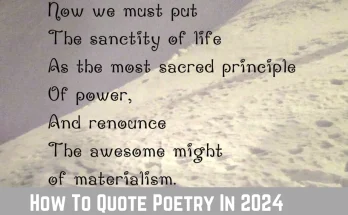“The Loss of India” by Zulfiqar Ghose is a poignant and evocative poem that delves into the profound impact of colonization on India. Through vivid imagery and powerful language, Ghose explores the themes of violence, communal hatred, and the loss of innocence. The poem is divided into three stanzas, each offering a glimpse into the emotional and physical landscape of a nation in turmoil. Exotic Nights and Disturbed Nights by Zulfiqar Ghose are also famous works.
Eagles cartwheeled above the illuminations of Independence Day. the dogs sniffed at the electric bulbs which sizzled like fat.
The tall grass the monsoons left on the mountains was aflame like corn in the setting August sun. Two stones collided, sparked, India began to burn.
2nd Stanza
At Mahatma Gandhi's prayer meeting, under Asoka's wheel on the tricolor, the air intoning religious verses, a man stood in the scabbard of the crowd, a machine gun at the tip of his zealous tongue. What well-tutored doves the politicians had released into the skies above Delhi had already blackened with the soot of communal hatred. The air chanted the Bhagvat Gita. the Koran and the Bible. Gandhi nodded, warmed by his goat's-milk diet, a Moses and a Mohammed thinned to the bones of a self-denying innocence, mild as foam on the tortured crest of his people's violence, straight as a walking stick on the savage contours of his country. When the bullets hit him, his body was cut into the bars of a jail he had never left, his stomach shriveled in another hunger fast.
3rd Stanza
A boy in the street. sulking in his boots, kicked at stones and pouted his lip at crows. There was the shade to retreat to, the doors
to be behind. But the pride of mountains annoyed him, the neighing peaks loud with thunder exhaling the smoke of monsoon clouds.
His nostrils twitched like a cow's when a fly sits there. For the sea air of Bombay was salt, dry. And how could he describe his loss?
How desperately calm the landscapes were! His heart, become a stone in the catapult of his mind, could have struck the foolish adult
passions where murder and faith excluded each other. Though eagles still hung like electric fans in the sky and the rocks suggested permanence,
the blood in the earth was not poultry-yard slaughter. The boy cushioned his heart in the moss of withdrawal for his India and his youth were lost
The Loss of India by Zulfiqar Ghose
In the first stanza, the poet describes the scene of Independence Day celebrations, where eagles soar above the illuminations. The dogs sniff at the electric bulbs, symbolizing the burning desire for freedom.
The tall grass left by the monsoons is aflame, reminiscent of the burning cornfields under the August sun. It is in this setting that the collision of two stones sparks a fire, symbolizing the beginning of India’s struggle.
The second stanza shifts to Mahatma Gandhi’s prayer meeting, where the air resonates with religious verses. Amidst the crowd, a man stands, his zealous tongue akin to a machine gun. The politicians, represented as well-tutored doves, release a message of communal harmony, but their words are tainted with the soot of hatred.
Gandhi, the epitome of self-denial, nods, embodying the innocence that contrasts with the violence of his people. However, when bullets hit him, his body becomes a metaphorical prison, reflecting the imprisonment of his ideals and the stifling of his hunger for justice.
In the third stanza, a disillusioned boy sulks in the street, kicking at stones and resenting the mountains and their thunderous presence. The sea air of Bombay, once familiar, now feels salt and dry. The boy struggles to articulate his sense of loss and witnesses the landscapes’ deceptive calmness.
His heart turns into a stone, representing his detachment and growing disillusionment. Despite the eagles in the sky and the seemingly permanent rocks, the blood in the earth is not merely a sacrifice in a poultry yard. The boy withdraws into himself, cushioning his heart in the moss of detachment, realizing that his India and his youth have been lost.
“The Loss of India” paints a vivid picture of the tumultuous period of India’s struggle for independence and the subsequent disillusionment.
Through powerful imagery and skillful use of language, Zulfiqar Ghose captures the emotional turmoil and collective loss experienced by a nation grappling with its identity and history.



